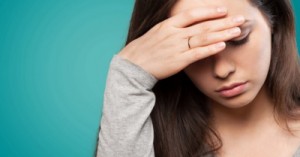Children like adults are usually predisposed to a particular way of processing information. Those who best do this by experiencing it or acting it out are known as tactile learners. A learning style that helps kids physically touch or try something in order to learn the concept best is known as tactile learning or kinaesthetic learning. The following article provides information on identifying tactile learners and how to use tactile learning within the learning environment.
How To Identify Tactile Learners?
Children with a tactile style of working need to feel or be a part of the information in order to receive and comprehend it effectively. They tend to be hands-on learners and enjoy activities as a way of learning concepts. They love to move around the classroom, often touching and fiddling with objects. Usually, they learn by trial and error rather by reading or listening to instructions.
How To Use Tactile Learning
One of the best ways to use tactile learning is to appeal to the children’s sensation of touch. If your lesson is rocks, have them feel and turn around in their hand's different types of rocks to understand their characteristics rather than read about them from a book or hear about them from you. Encourage tactile learners to dabble with paint and glue as they read stories or show a video to others. Also keep a variety of materials and textures like beads, yarn, clay, string, fabric, cardboard, and sponge within easy reach for them to pick and play with during free play time.
Tactile learners like to move about so when teaching shapes perhaps, ask them to use their hands and arms to indicate the shapes, rather than identify them on posters; having them stamp their feet or clap their hands to songs and rhymes can better help them retain the information; tactile learners make great teachers’ helpers as they are usually keen to pass out papers, bring stuff from cupboards and write on boards.
The outdoors makes for a particularly effective setting for tactile learning; take your learners on a nature walk to explore textures like smooth, rough, and grainy or encourage them to find leaves that may be dry, squishy, prickly or soft.
Tactile strategies can also help in emotional self-regulation; help an overstimulated child calm down by having them dig their fingers and hands into bins of rice or beans; even something as mundane as playing with mud can be relaxing as some kids may find all that squishing and squelching oddly soothing.
With tactile learners, be prepared to answer several questions on why and how things work. Don’t get impatient or see these queries as argumentative but understand that these children need to know how things fit in and work together.
Further Reading
Implementing Different Learning Styles When Teaching Children - The following article details each learning style, the set of characteristics which shows how a child may learn and the best way to teach a child based on their own individual learning style.
Reference:
What Is Tactile Learning, WGU Tennesse







 As an Educator in Australia, your pay rate falls under the Children’s Services Award 2010. This award states the minimum amount that an employer can
As an Educator in Australia, your pay rate falls under the Children’s Services Award 2010. This award states the minimum amount that an employer can When working as a qualified Early Childhood Teacher (with a university degree) within a service, your rate of pay will come from the Educational Services
When working as a qualified Early Childhood Teacher (with a university degree) within a service, your rate of pay will come from the Educational Services When working as a Diploma Qualified Educator your pay rate is from the Children's Services Award 2010. This Award states your minimum rate of pay
When working as a Diploma Qualified Educator your pay rate is from the Children's Services Award 2010. This Award states your minimum rate of pay When working as a Cert 3 Qualified Educator, your pay rate is from the Children's Services Award 2010. This Award states your minimum rate of
When working as a Cert 3 Qualified Educator, your pay rate is from the Children's Services Award 2010. This Award states your minimum rate of Educational Leaders play a crucial role in their early childhood service by ensuring that the educational program aligns with best practices and supports the holistic
Educational Leaders play a crucial role in their early childhood service by ensuring that the educational program aligns with best practices and supports the holistic In early childhood education and care, ratios are more than a technicality—they are a frontline safeguard. Every child deserves responsive supervision, emotional connection, and developmental
In early childhood education and care, ratios are more than a technicality—they are a frontline safeguard. Every child deserves responsive supervision, emotional connection, and developmental Here’s a comprehensive Mobile Phone and Smart Watch Policy tailored for early childhood education and care (ECEC) services in Australia, aligned with the latest 2025
Here’s a comprehensive Mobile Phone and Smart Watch Policy tailored for early childhood education and care (ECEC) services in Australia, aligned with the latest 2025 With the new national child safety reforms kicking in on 1 September 2025, early childhood services like yours have a real opportunity to lead the
With the new national child safety reforms kicking in on 1 September 2025, early childhood services like yours have a real opportunity to lead the The Sea of Fish Challenge is a national initiative that invites children, educators, families, and communities to create and display fish artworks as a symbol
The Sea of Fish Challenge is a national initiative that invites children, educators, families, and communities to create and display fish artworks as a symbol Across the early childhood education and care sector, educators are sounding the alarm: current staffing ratios are insufficient to deliver safe, meaningful, and developmentally appropriate
Across the early childhood education and care sector, educators are sounding the alarm: current staffing ratios are insufficient to deliver safe, meaningful, and developmentally appropriate


